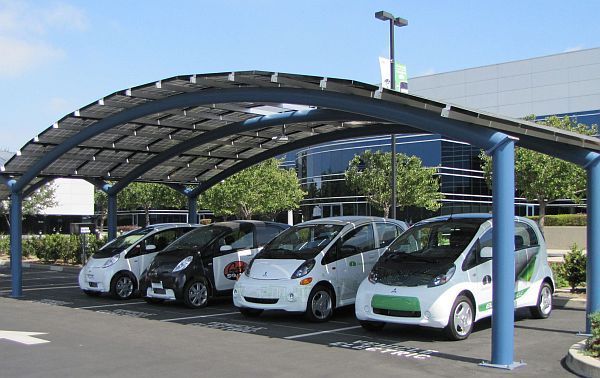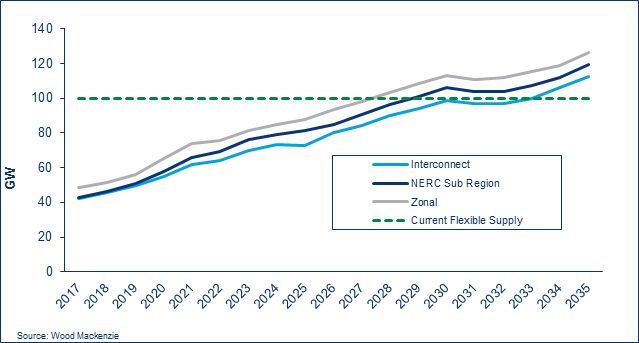One commentator on the Energy Institute at Haas’ blog entitled “Everyone Should Pay a ‘Solar Tax’” points out that one version of economic theory holds that short run marginal cost is the appropriate metric for composing efficient prices. And he points out that short-run (SRMC) and long-run marginal costs (LRMC) should converge in equilibrium. So he implicitly says that long run marginal costs are the appropriate metric if as a stable long-run measure is based, as he states, on forecasts.
Even so, he misses an important aspect–using the SRMC for pricing relies on important conditions such as (1) relatively free entry and exit, (2) producers bear full risk for their investments, and (3) no requirements exist for minimum supply (i.e., no reserve margins). He points out that utilities overbuild their transmission and distribution (and I’ll point out their generation) systems. I would assert that is because of the market failures related to the fact that the conditions I listed above are missing–entry is restricted or prohibited, customers bear almost all of the risk, and reserve margins largely eliminates any potential for scarcity rents. In fact, California explicitly chose its reserve margin and resource adequacy procurement standards to eliminate the potential for pricing in the scarcity rents necessary for SRMC and LRMC to converge.
He correctly points out that apparent short run MC are quite low (not quite as close to zero as he asserts though)–a statement that implies that he expects that SRMC in a correctly functioning market would be much higher. In fact, as he states, the SRMC should converge to the LRMC. The fact is that SRMC has not risen to the LRMC on an annual average basis in decades in California (briefly in 2006, 2001 and 2000 (when generators exerted market power) and then back to the early 1980s). So why continue to insist that we should be using the current, incorrect SRMC as the benchmark when we know that it is wrong and we specifically know why its wrong? That we have these market failures to maintain system reliability and address the problems of network and monopolistic externalities is why we have regulation.
The solution is not to try to throw out our current regulatory scheme and then let the market price run free in the current institutional structure with a single dominant player. Avoiding market dominance is the raison d’etre for economic regulation. If that is the goal, the necessary first step is introducing and sustaining enough new entrants to be able to discipline the behavior of the dominant firm. Pricing reform must follow that change, not precede it. Competitive firms will not just spontaneously appear due to pricing reform.
It’s not clear that utilities “must” recover their “fixed” investments costs. Another of the needed fixes to the current regulatory scheme to improve efficiency is having utilities bear the risks of making incorrect investment decisions. Having warned (correctly) the IOUs about overforecasting demand growth for more than a dozen years now, they will not listen such analyses unless they have a financial incentive to do so.
Contrary to claims by this and other commentators, It is not efficient to charge customers a fixed charge beyond the service connection cost (which is about $10/month for residential customers for California IOUs). If the utility charges a fixed cost for the some portion of the rest of the grid, the efficient solution must then allow customers to sell their share of that grid to other customers to achieve Pareto optimal allocations among the customers. We could set up a cumbersome, high transaction cost auction or bulletin board to facilitate these trades, but there is at least another market mechanism that is nearly as efficient with much lower transaction costs–the dealer. (The NYSE uses a dealer market structure with market makers acting as dealers.) In the case of the utility grid, the utility that operates the grid also can act as the dealer. The most likely transaction unit would bein kilowatt-hours. So we’re left back where we started with volumetric rates. The problem with this model is not that it isn’t providing sufficient revenue certainty–that’s not an efficiency criterion. The problem is that the producer isn’t bearing enough of the risk of insufficient revenue recovery.
An alternative solution may be to set the distribution volumetric rate at the LRMC with no assurance of revenue requirement on that portion, and then recover the difference between average cost and LRMC in a fixed charge. This is the classic “lump sum” solution to setting monopoly pricing. The issue has been how to allocate those lump sum payments. However, the true distribution LRMC appears to be higher than average costs now based on how average rates have been rising.










